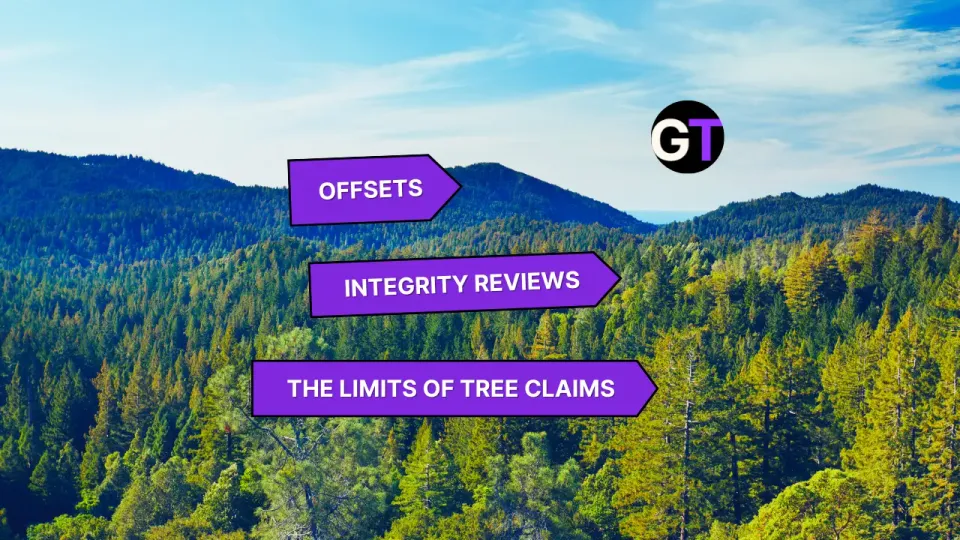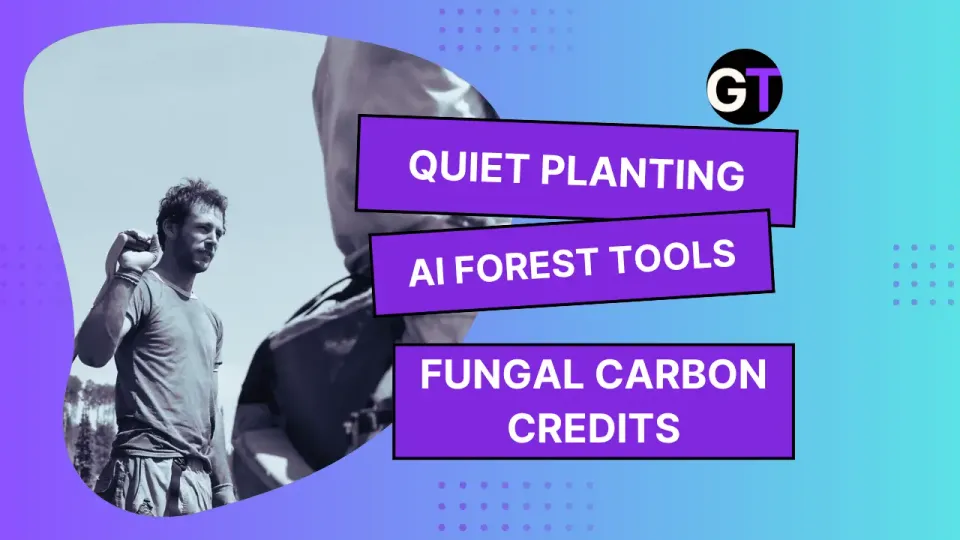Weekly Forest News, June 6
Weekly forest finance update: carbon market crashes, youth eco-leaders rise, biomass burial bets big, and bonds go wild for biodiversity.

Amazon Tree Height Data Goes Public at Ultra-High Resolution
CTrees just released a ~5 m resolution Amazon canopy height dataset on the GEE Community Catalog—now free and ready to use. Behind the scenes, it took hours of prep to make this data plug-and-play for Earth Engine users.
💬 Could open forest canopy data unlock better tracking of tree growth and carbon gains?
👉👉 Explore it in the GEE Community Catalog GitHub
Get Deforestation Out of Europe’s Coffee: A Wake-Up Call for the Industry
The EU drinks more coffee than any region on Earth—and with it, a not-so-small side of deforestation. A new report by Coffee Watch reveals just how aggressively the coffee lobby tried (and failed) to water down the EU Deforestation Regulation (EUDR). Spoiler: some of your fave brands weren’t just sipping espresso, they were brewing up resistance.
Yet, the evidence is clear: coffee’s supply chains aren’t uniquely complex, over half the global supply is already certified, and traceability is more common here than in palm oil or soy. If the coffee sector can trace beans back to farms for compliance, what’s stopping reforestation efforts from doing the same?
💬 Can coffee’s traceability tools become a blueprint for scaling reforestation—and keeping trees standing?
👉👉Read more from Coffee Watch
Redefining Degradation: A Smarter, Greener TFFF is Possible
If your idea of forest degradation starts and ends with fire, it’s time for a system upgrade. In their scorching (pun fully intended) Degradation Recommendation Note, a dream team of scientists and tree-huggers—including folks from ETH Zürich, NASA-JPL, and the Plant-for-the-Planet Foundation—lay out why the Tropical Forest Forever Facility (TFFF) needs to think way beyond burn scars.
Only a third of forest degradation is caused by fire; the rest? Think logging, fragmentation, edge effects, and good ol’ climate stress. The authors propose a multi-sensor, remote-sensing approach and a revolving door of scientific review to ensure monitoring stays sharp, fair, and future-proof. Because you can’t protect what you can’t measure—and the current playbook is missing half the plays.
💬 Can TFFF lead the charge in modern, nuanced forest monitoring—or will it just be another case of fire and forget?
👉👉Read the full recommendation note right here
Optimizing Conservation, One Line of Code at a Time
If you've ever wished biodiversity planning could be less... chaotic and more click-and-solve, meet your new favorite R package: prioritizr. In a recent Conservation Biology paper, Hanson et al. show how this open-source decision support tool can supercharge conservation planning using good old-fashioned optimization. From birds in Washington state to entire planetary-scale biodiversity efforts, prioritizr helps planners pinpoint exactly where to protect, what to prioritize, and how to do it efficiently. Bonus: it plays nice with a range of solvers (shoutout to Gurobi) and file formats, and even handles spatial connectivity, fragmentation, and multiple conservation objectives. TL;DR: It's like having a conservation PhD and a supercomputer in your R console.
💬 Could flexible, algorithm-powered planning tools like prioritizr be the secret sauce for hitting 30x30 goals?
👉👉Read the full study on Conservation Biology
Invasive Species: The Poorer You Are, the Harder They Hit
In a sweeping analysis across 56 countries, Bradshaw et al. (2024) make a compelling case in Ecological Economics: when it comes to invasive species, poorer nations bear the brunt of the damage while wealthier ones invest more in managing the threat. Using data from the InvaCost database (2000–2020), the study finds that countries with lower economic activity—especially those dependent on agriculture—suffer a disproportionately high ratio of ecological damage to management spending. In contrast, high-income countries with robust trade and low corruption tend to spend more effectively on invasive species control. The paradox? Wealthier nations are more exposed due to higher trade volumes but better equipped to minimize long-term impacts. The research adds urgency to calls for more equitable global support in biosecurity, especially as climate change turbocharges biological invasions.
💬 Is global invasive species management reinforcing economic inequality—and should richer nations foot more of the bill?
👉👉Read the full study on Science Direct
Replanting Pays Off: Study Finds Tree Planting Boosts Post-Fire Recovery by 25%
A first-of-its-kind analysis from Northern Arizona University shows post-fire tree planting speeds up forest regrowth by 25.7% across the U.S. Interior West. Using data from 4,700 planting units, researchers found spring planting in cold, wet areas yielded the best survival rates—up to 20% higher than dry-season efforts. But success isn’t just about timing: climate conditions, local seed sources, and adaptive management all play a role. With wildfire damage on the rise and only 6% of replanting needs met to date, the message is clear—strategic reforestation isn’t just effective, it’s essential.
💬 Could smarter planting close the reforestation gap—and keep forests from flatlining?
👉👉 Read more in Phys.org
Philippines Bets on Natural Regeneration to Restore Forests—But Funding and Fire Threaten Long-Term Gains
A deep dive into three reforestation projects across the Philippines reveals that assisted natural regeneration (ANR)—a low-cost, low-intervention method—can restore tropical forests while supporting biodiversity, watershed health, and livelihoods. But while stakeholders are motivated by environmental and economic benefits, the success of ANR is hampered by short-term funding, fire risk, policy hurdles, and limited local incentives. Researchers call for longer project timelines, stronger community support, and policy shifts that reward regeneration efforts. Without this, the nation’s reforestation dreams may remain just that—dreams.
💬 Can regeneration work without reinvestment—and will short-term gains lead to long-term growth?
👉👉 Read more in Trees, Forests and People: ScienceDirect
Mass Timber, Major Impact: New Study Ties Climate Wins to Wood Construction
Scaling up mass timber use could slash global emissions by up to 39 GtCO₂e and boost forest stewardship worldwide, according to a new study. Higher wood prices from demand for cross-laminated timber are projected to expand managed forests by up to 41M hectares—turning timber into a climate and conservation tool.
💬 Could mass timber incentives be the missing link between reforestation and real emissions cuts?
👉👉 Read the full study in Nature Communications

Edited by Chris Harris

This work is licensed under a
Creative Commons Attribution 4.0 International License.





